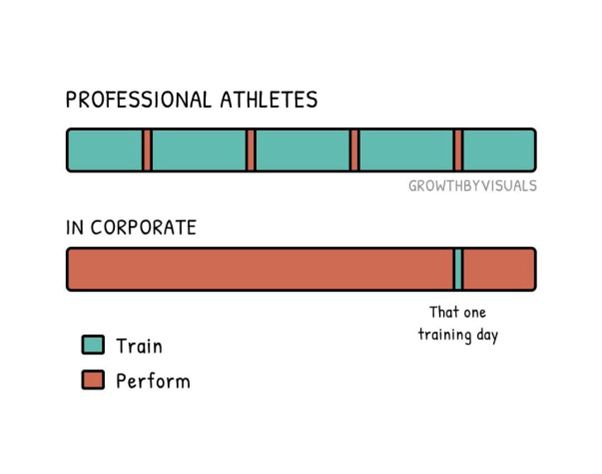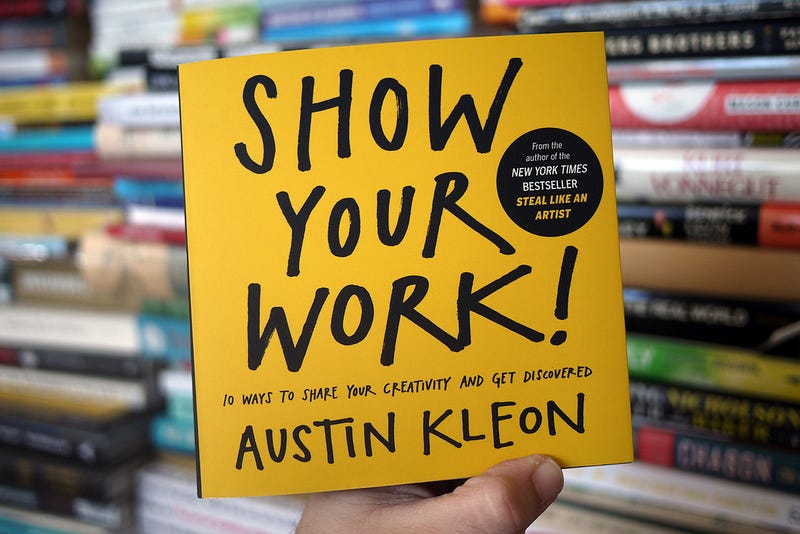54. How to be a better-than -average marketer.
Hint: You don't need to be a genius.
I came across the above visual by a fitness content creator, Mark Lewis, and I was intrigued because he argues that one should aim to be better than average rather than the best, because:
The beginning, the steepest part of the learning curve, is hard
When you reach the middle, things start to feel monotonous
Becoming a pro demands sacrifices most aren’t willing to make.
But putting in a little extra effort in the middle? That moves you ahead of the pack.
I’ve been reflecting on this in my journey as a marketer. What does it take to become better than average in marketing?
Here’s what I’ve learned—through experience and by observing the habits of exceptional marketers over the past 15 years:
Master the Fundamentals— The following visual resonates with me as a triathlete. I train 90% of the time to perform the remaining 10%. But when it comes to work, most of us spend very little time on learning.
I have no formal education in marketing, nor did I get any opportunity to work in marketing meccas such as P&G. I have tried to make up for it by training myself through online courses (Mark Ritson, Hubspot, LinkedIn, Datacamp, etc.), books (Philip Kotler, HBR, etc.), and by following the insights shared by experts (Elena Verna, Avinash Kaushik, among many others).
To become better than average, build your base with the fundamentals and continue learning how they evolve and apply in different scenarios.
Act with Intention - Marketing is broad. To get better than average, you need clarity on:
What are you best at?
What do you love doing?
Who benefits most from your strengths?
For me, that’s consumer insights. It was the gateway to my marketing career 15 years ago and still energizes me more than anything else. Hence, I intend to help early-stage startups unlock growth through consumer insights.
What is your intention?
Be Consistent— Small daily gains compound over time. Improve by 1% daily, and you’ll be 37x better in a year. But to get those daily gains, you need rituals.
Mine are:Writing this newsletter
Sharing regularly on LinkedIn
Reading a little every day to stay inspired
Find Leverage - You might say now, “But I don’t have time to do all this!” That’s where leverage comes in: using tools or skills to get outsized returns from your effort. For example, you can:
Automate recurring tasks—Batch and schedule posts using social media platforms, automatically curate interesting content (Google Alerts> Zapier > Excel). Meetings can take a lot of your time, so use copilot tools such as read.ai to automatically send summaries and action items after every call to all the attendees.
Learn a power skill - Writing, coding, public speaking, and storytelling are some skills that can amplify your abilities. For example, writing on LinkedIn has helped me grow my network to nearly 8,000 followers and opened many new doors.
If you like public speaking, go to events to represent your brand.
If you like coding or can learn to use no-code tools such as Lovable, you can create draft landing pages without depending on the UI team.
There are tons of AI tools available now to automate marketing workflows.
Share your knowledge— The book Show Your Work by Austin Kleon didn’t hit me the first time I read it. But after a year of writing this newsletter, it finally makes sense.
You don’t need to be an expert. Just be curious. Share what moves you.
When I post on LinkedIn, my ideas travel far beyond my immediate network. Sometimes, the imposter syndrome rears its ugly head, but I remind myself I’m not trying to be a marketing guru. I’m just a learner, trying to be a little better than average every day.
This is my longest newsletter in a while—I hope it was worth your time.
I'd love to hear from you if you have thoughts, rituals, or ideas on becoming a better-than-average marketer. Let’s keep learning together.





